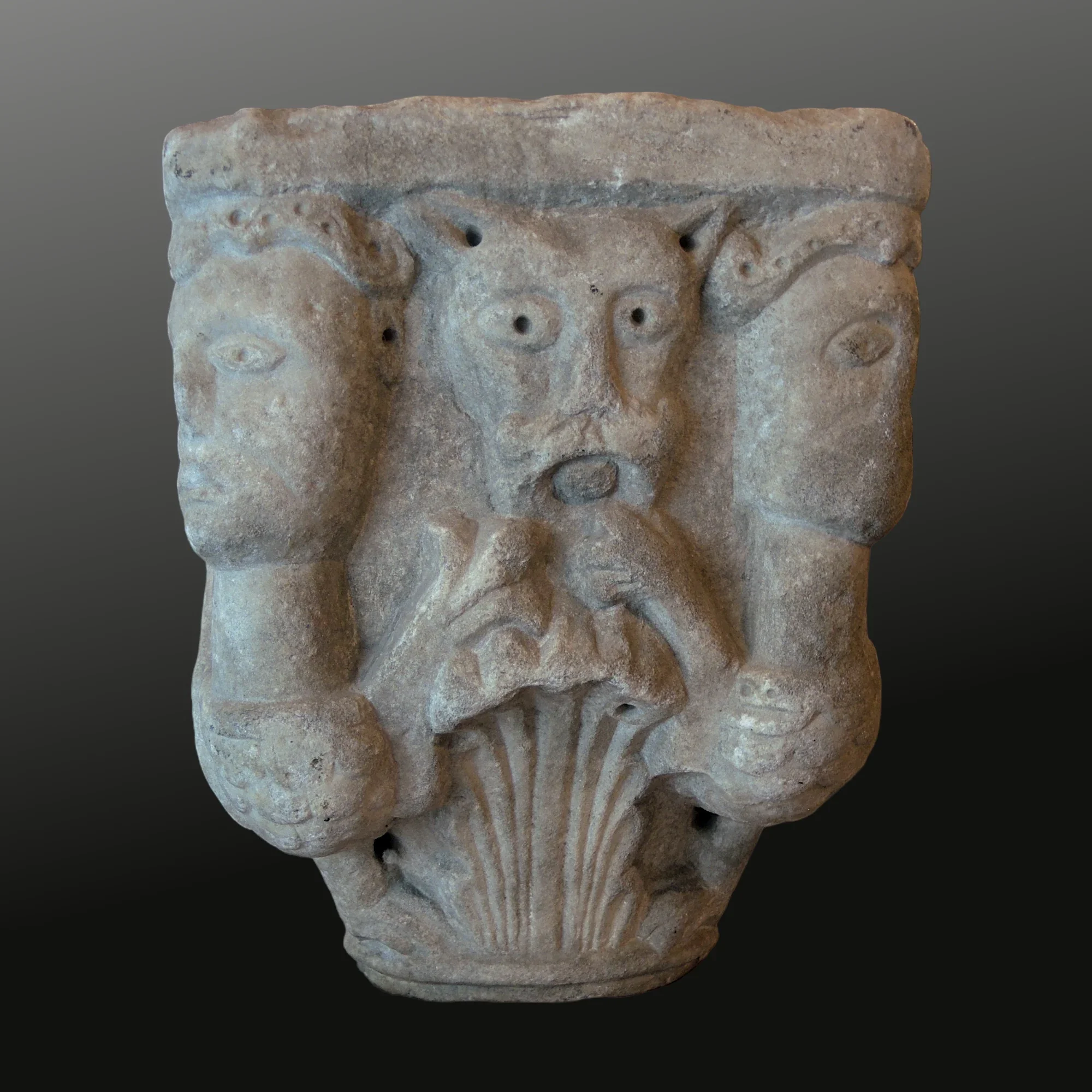Back to the artwork ref.276
Switch to full screen mode
Exit full screen mode

Origin: Rhône Valley, France.
Medium: Marble.
Size: Height 30 cm
Period: 12th century.
Condition: Light erosion
Price: on demand
Ref.276
Three-sided applied capital in marble, carved with two monstrous busts of winged sirens with serpentine tails; Romanesque work from the Rhône Valley, probably between the Velay and the Rhône regions, second half of the 12th century. The main face shows a zoomorphic mascaron (short muzzle, upright ears) flanked by two winged sirens whose serpentine bodies unfold onto the adjoining faces. Between the mascaron and the astragal emerge stylised acanthus leaves. The sirens’ faces are set into the angles of the capital, reinforcing the three-dimensional reading of the piece. Their cylindrical necks are encircled by a beaded headband worked with the drill. This is neither the classical bird-sirens nor the pure fish-sirens; the winged, scaly body ending in a fin suggests a creature at once aerial, chthonic and marine, evoking the three realms of sky, earth and sea.
The structure of the capital is organised around strongly emphasised corner occupations: the monstrous busts are literally set into the angles of the basket, their cylindrical necks emerging decisively from the block. This way of using the angle — not as a mere geometric junction, but as a place of emergence for a near three-dimensional figure — is a recurring feature of Romanesque sculpture in the Rhône Valley and Auvergne (Musée de Cluny, capital Cl. 14413), where human, hybrid or animal heads often “inhabit” the corner and impose a three-dimensional reading. This composition, with zoomorphic or monstrous figures emerging from the angles and a central mascaron (Musée Crozatier, capital Inv. 2020.1.1), is very common in Rhône Valley monuments (Vienne, cloister of Saint-André-le-Bas), as opposed to Provence, where one expects more classicising acanthus and more antiquising baskets.
Consulted works:
·Vienne, cloister of Saint-André-le-Bas: J. Vallery-Radot, “La résurrection du cloître de Saint-André-le-Bas à Vienne”, Bulletin Monumental, 1942
·Vienne, Saint-André-le-Bas: Archéodunum report (2011 diagnostic)
·Auvergne romane, Bernard Craplet, Paris 1972.
·La Sirène dans la pensée et dans l’art de l’Antiquité et du Moyen Âge. Du mythe païen au symbole chrétien, Jacqueline Leclercq-Marx, Brussels, 1997